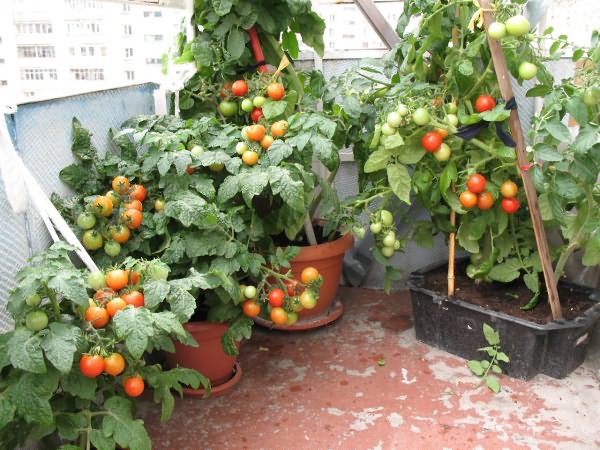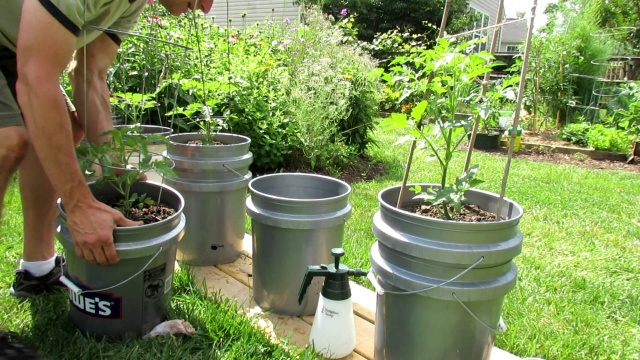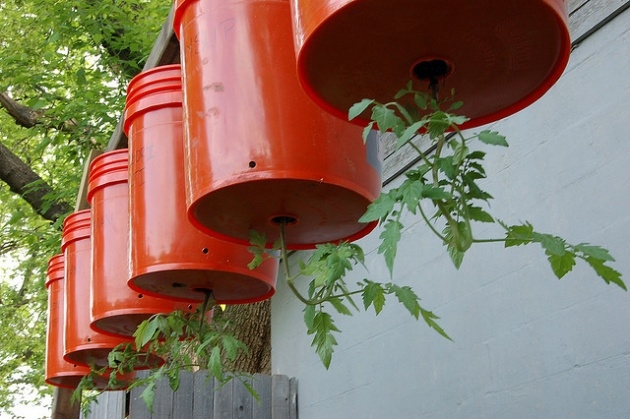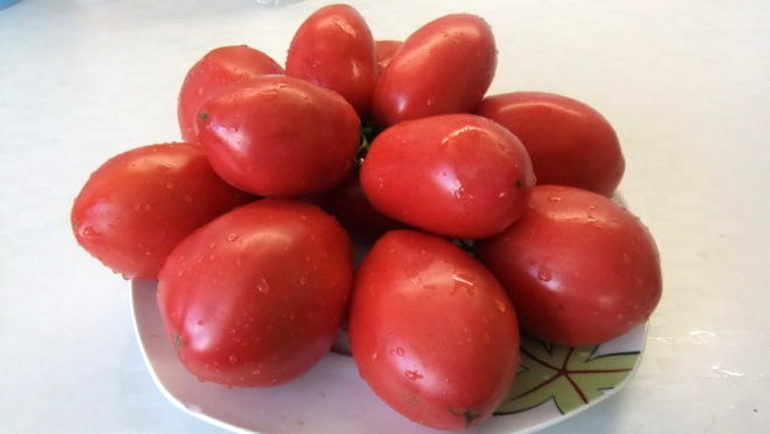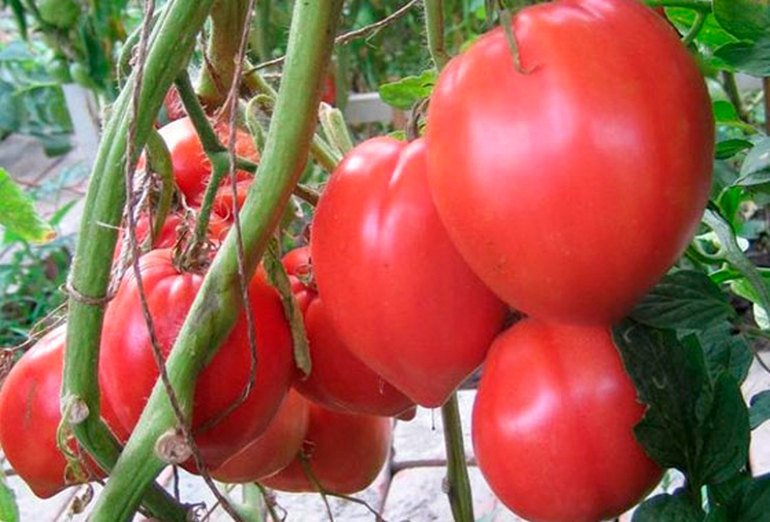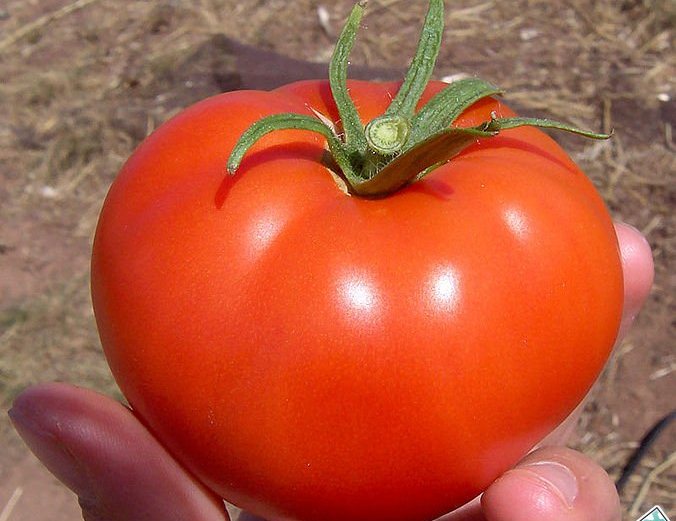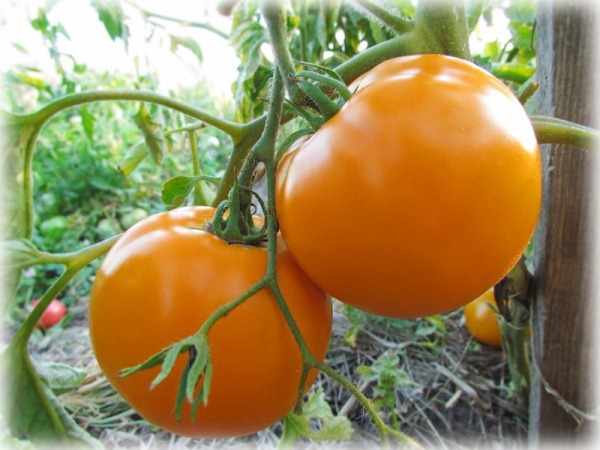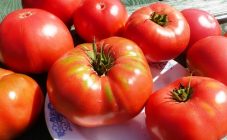Content:
Growing tomato seedlings in buckets makes harvesting much easier. Typically these containers serve as containers for greenhouse and outdoor cultivation. However, inventive summer residents have come up with a number of other original technologies. Growing tomatoes in buckets has both positive and negative sides.
Growing tomatoes on your own will allow you to harvest from early June until the end of the fall season. However, for planting in a greenhouse, it is necessary to select specialized varieties; when caring for them, you must strictly adhere to agrotechnical recommendations.
Seed material is best selected among hybrid varieties. Hybrids have good resistance to the most common diseases, easily take root in a greenhouse, and are also capable of producing abundant yields.
When selecting varieties of early, middle and late ripening for cultivation in greenhouse conditions, it is necessary to take into account the size of the area allocated for planting. The size of the greenhouse will play an important role. In a tall and spacious greenhouse, low-growing tomato bushes should be placed around the perimeter, and higher ones in the center.
Growing tomatoes in buckets in a greenhouse is a simple process, but the features of the technology should be studied in advance.
Pros and cons of growing tomatoes in buckets
Using this compact method, you can grow tomatoes on the balcony. Even deformed buckets can be used as a volumetric pot. Universal containers with a volume of 10 liters are suitable for growing medium-sized and tall varieties. Excess liquid will drain from the bottom. The gardener will only need careful care of the planting material.
The advantages of growing tomatoes in buckets:
- The entire volume of liquid, together with useful substances, will be directed directly to the plant organism. Preventing liquid from spreading will allow water to enter directly into the root system of the tomato bush.
- Weeding weeds within the area limited by the capacity of the bucket is much easier than clearing weeds and loosening an entire garden ridge.
- If necessary, the tomatoes in the buckets can be moved to a more suitable location. An outdoor container can be placed under a canopy if it rains in the region for a long time.
- In cool summer conditions, soil warming is carried out more intensively, which has a positive effect on the speed of seedling development, the quality of fruit filling and the ripening time of vegetables in comparison with planting in open ground.
- To extend the fruiting period, miniature plantings can be placed in a greenhouse at the end of the season.
The disadvantage of the method of growing tomato seedlings in buckets is the likelihood of overheating the soil in conditions of excessively high air temperatures.
Most varieties can easily withstand high soil temperatures, but when grown in a container, moisture evaporation occurs much earlier. Bucket tomatoes need to be watered more frequently compared to open ridge tomatoes.
Tomatoes in buckets: growing
Hilling contributes to the development of a powerful root system, as a result, tomatoes are larger in size and ripen earlier. In addition, the yield rate increases.
Plantings placed too close to each other in greenhouse conditions or on an open ridge are not possible to huddle due to the risk of damage to the root system of a neighboring plant. Having planted tomato seedlings as tightly as possible, after reaching a 20-centimeter height, you can carry out a garter. A bucket without a bottom is placed on each shrub.
In a warm and humid microclimate, the growth of additional roots occurs much faster, which contributes to a greater enrichment of the plant's body with liquid and useful compounds. As the plant develops, the soil is poured until the container is completely filled.
Hilling in this way, in contrast to the traditional method, prevents soil scattering and erosion and also helps to create a more attractive appearance of the beds. Containers made of metal or plastic material can be used.
How to grow a tomato bush in an inverted bucket
This growing technique was invented by gardeners from Europe. In our country, this technique has been simplified, but it has not become less effective.
Gardeners, who have already applied this method, argue that its use has a positive effect on the yield indicator, and also helps to save usable space in a small suburban area. The suspended container can be placed in a place not suitable for planting. In addition, tomatoes grown in buckets can serve as a decorative element of a summer cottage.
How to care for plantings
Caring for plantings in a bucket does not differ from the agricultural technology of plants planted on an open ridge. The greenhouse with the buckets placed in it should be regularly ventilated.
Seedlings should be watered in moderation under the root system. In the bucket, the liquid does not spread, as in the beds, which contributes to its even distribution.
The maximum permissible soil temperature is considered to be 30 ° C. In too hot weather, the planting containers can be placed in a shady shelter.
How to fertilize tomato seedlings in a bucket
The appearance of seedlings is an indicator of the need for fertilization. Slow growth of the shrub, unnaturally pale color of the leaves are symptoms of a lack of nitrogen. Excessive thickening of the foliage indicates an excess of nitrogen, which will negatively affect the size of the fruit and their gastronomic properties. Yellowing and leaf fall characterizes the lack of phosphorus. Due to the lack of potassium, the shrub begins to dry out rapidly.
The last type of fertilizer can be prepared at home, leaving mullein or bird droppings to re-mash. The selected type of fertilizer must be diluted in warm water, left to ferment, after which you can fertilize tomato bushes.
Another feeding option is a yeast solution: 10 g per glass of water, mix well, dilute in a bucket of warm water and leave for several days. The fermented solution is applied under the planting root.
A good top dressing is obtained from crushed nettle and dandelion leaves, which are filled into a 200 liter barrel.You also need to add manure from any animal, except pigs. A barrel filled to the brim with water and closed with a lid is infused for 10 days, which allows the mixture to ferment. The mixed essence is diluted with a teaspoon of pure water in a bucket. One shrub requires 3 liters of solution.
Mineral fertilizers are suitable for foliar and root application.
Observing the rules of agricultural technology, you can harvest tomatoes without even having a summer cottage.
